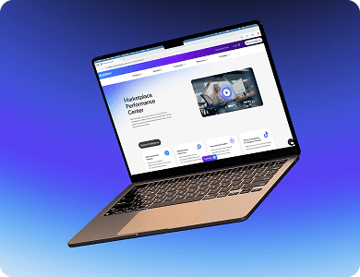Customer Master Data Management: Definition and Best Practices
Customer master data management (CMDM) is the process of merging customer information, identifiers, and attributes to create a unified profile of each business customer. A CMDM system centralizes this “golden record” so each arm of the business has access to consistent, up-to-date customer master data for smarter, more strategic decision-making.
What Is Customer Master Data?
Customer master data is the information a business collects that uniquely identifies a customer within a business or organization. This includes identifying information like name, contact details, financial information, demographics, marketing and communication preferences, and more — all of which are required for transactions, communication, and relationship management.
Why Is Customer Master Data Management Important?
Customer master data management is part of the foundation of an enduring customer relationship. In fact, research from McKinsey shows that companies that champion customer analytics are twice as likely to generate above-average profits and marketing earnings than companies that don’t.
Customer master data management reduces redundancy and errors in customer records, making your data more accurate and actionable. And in a time when consumers expect a seamless, personalized experience, customer master data is key to enhancing targeting and shaping personalization strategies.
Operationally, customer master data management frameworks helps ensure data consistency across departments. This gives each arm of the business access to business-critical customer data they need to carry out their function. For example, CMDM facilitates access to accurate billing and transaction data, which allows finance to improve invoice accuracy and prevent revenue loss due to duplicate accounts.
Additionally, CMDM reduces risk and helps maintain compliance. By centralizing your data and establishing a data governance framework, CMDM tracks and protects the accuracy of your records in alignment with your industry’s compliance standards.
Challenges of Poor CMDM
Poor CMDM can hinder your business success and leave you trailing behind competitors. Here are some challenges you might encounter — and how to overcome them:
1. Absence of a unified customer view: With each team using its own software and systems, customer data is fragmented across the business, leading to inconsistent customer interactions, redundant communication, and difficulty understanding customer needs.
Overcome this challenge by using a master data management (MDM) system to consolidate customer data across all business units via API or integration tools. Also, assigning unique customer IDs helps you avoid duplicate records and track interactions and transactions.
2. Persistent data errors: Without a dedicated system in place, teams fall back on manual data entry for customer data. This means there’s little to no data validation, and formatting is inconsistent across systems. Incorrect data can lead to operational inefficiencies and poor decision-making.
Address this issue by implementing data validation rules to reduce errors. Use automation and AI to detect and correct errors, flag inconsistencies, and prevent duplicates. You can also establish a data governance framework to continuously maintain accurate customer data in each department.
3. Limited insight into corporate hierarchies: For B2B companies, understanding corporate hierarchies is crucial for managing relationships, pricing strategies, and sales opportunities. However, poor CMDM leads to incomplete or disorganized corporate structures, and therefore missed cross-selling and upselling opportunities.
Tackle this challenge by establishing structured parent-child relationships between companies to reflect accurate corporate hierarchies. You can integrate third-party data providers to enrich corporate structure information and use AI tools to analyze and visualize relationships between entities for better decision-making.
Why Customer Data Matters: B2B vs B2C Differences
Customer data is essential, no matter your industry or who you sell to. But while customer data is important to both B2B and B2C, each has a different way of collecting, managing, and using data because of their different relationships with customers.
To start, B2B customers tend to be organizations, while B2C customers are individual people. This means that customer data for B2B companies includes corporate hierarchies and multiple stakeholders who influence purchase decisions, while B2C data includes personal information and organizations focus on customer segmentation (e.g. location, shopping behavior, etc)
B2B and B2C companies also have different buying behaviors and sales cycles. Since B2B sales cycles last months and require multiple touchpoints, data helps predict customer needs based on past transactions and company trends. On the other hand, B2C buying decisions are often faster, more impulsive, and come with the expectation of a personalized experience, so B2C organizations focus on transactional data like purchase frequency and cart abandonment rates.
There’s also a difference in data volume and complexity for B2B and B2C companies. Where B2C manages high-volume, large scale customer databases — which includes millions of records from website visits, purchases, and social media interactions — B2B has fewer total customers and more complex account data. So while B2B structures data to track organizational relationships and credit risk, B2C uses big data analytics to understand trends, predict demand, and personalize marketing.
In terms of marketing and customer engagement, B2B relies on relationship-driven marketing while B2C often takes a mass-marketing approach. As a result, B2B customer data is used for account-based marketing (ABM) to target specific companies, while in B2C, customer data is used to create personalized product recommendations and automated marketing campaigns.
The Customer Master Data Management Key Components and Best Practices
Data Collection
An important first step, data collection involves gathering customer data from various internal and external sources. Each company uses different data systems, but some common ones include CRM tools, ERP systems, customer service platforms, social media, and other ecommerce platforms. This process allows businesses to centralize all incoming data for validation and enrichment.
Data Ingestion
Once the data has been collected, it will move into the master data management platform or repository. This can be done using batch processing, API integration, and data format conversions, ensuring that data flows smoothly from source systems into the CMDM system.
Data Profiling
Then, you analyze the quality, completeness, and structure of the incoming data. During this process, your CMDM platform checks for duplicates, missing values, formatting issues, and anomalies and outliers. This gives you a good picture of the health of your customer data before cleansing it.
Data Cleansing
The data cleansing stage standardizes, corrects, and enriches customer records. That involves formatting names, numbers, and addresses to maintain consistency, removing invalid or outdated data, and filling in missing values using third-party enrichment. This makes your data accurate, complete, and useful to stakeholders.
Data Matching and De-duplication
At this stage, you identify and merge duplicate customer records across systems into a single master data file that everyone uses. Using techniques like rule-based matching, machine learning algorithms, and master ID assignments, you can create a single, trusted version of each customer, also known as a “golden record.”
Data Consolidation (Golden Record Creation)
As you consolidate all validated and enriched information into a single master profile to create the golden record, include a unique customer ID, personal information like full name, address, and contact info, and transactional and behavioral data. This provides one single version of truth for each customer used across all departments.
Data Governance and Stewardship
To maintain the integrity of the data records, apply rules, policies, and processes to maintain high data quality over time. Namely, provide role-based access to control who is authorized to access, update, and delete data. Data validation rules, audit trails, and approval workflows can also help keep customer data compliant, secure, and high-quality.
Data Synchronization and Distribution
With a database full of golden records, now you push clean, unified customer data to downstream systems like CRMs, ERPs, etc. Using real-time API updates, scheduled batch exports, and message queues, you can enable internal data consistency by ensuring every team and system uses the same up-to-date customer information.
Monitoring and Continuous Improvement
As you implement this new customer master data management system, it’s important to continuously monitor data quality, usage, and changes. Create data quality dashboards to maintain a birds-eye view of data, activate automated alerts for issues that crop up, and develop KPIs to track the accuracy, completeness, and timeliness of information. This allows you to improve the process over time and adapt to new business needs.
6 Most Common Data Sources for Customer Master Data Management
Customer master data management is powered by data from multiple internal and external sources, including:
CRM Systems (Customer Relationship Management)
CRM systems collect customer data from some of the earlier touchpoints in a customer’s lifecycle, including customer interactions, sales activity, contact details, and relationship history. This data is crucial for managing customer touchpoints and your sales pipeline.
ERP Systems (Enterprise Resource Planning)
An ERP system is another centralized source of truth. ERPs inform a lot of company decision-making by maintaining customer-related financials, orders, billing, and shipping information. This directly impacts the bottom line as it's the source of truth for billing addresses and payment terms.
Marketing automation platforms
Marketing automation platforms store lead and campaign data, behavioral info, and customer segmentation. This is useful for understanding customer intent, preferences, and campaign performance.
Ecommerce platforms
Ecommerce platforms like Shopify, Magento, and WooCommerce capture online purchase history, cart behavior, and customer profiles, providing transactional and behavioral data for online customers.
Customer Support Systems
Customer support systems are another key source of customer data, as they regularly interface with customers. Services like Zendesk, Freshdesk, and ServiceNow track service tickets, inquiries, complaints, and resolutions. These systems are a crucial part of providing a great customer experience, making the data-driven insights into customer satisfaction and pain points even more important.
Third-Party Data Providers
This supplements internal data with demographic, firmographic, or credit information, helping enrich customer profiles and validate internal records.
Benefits of Implementing Customer Master Data Management
Customer master data management can provide strategic and operational advantages that set your business apart in the market. It empowers strategic decision-making, which ultimately drives business growth and long-term success.
CMDM’s ability to categorize customers based on behavior, demographics, and transaction history leads to more targeted and successful marketing and sales efforts. As such, unified customer data allows you to meet your customers’ expectations of personalization by enabling tailored marketing strategies, precise recommendations, and highly personalized customer experience.
Additionally, customer master data management encourages better customer data hygiene (e.g. eliminating duplicate records, reducing manual data corrections, etc), which can cut costs and improve customer satisfaction.
Having consistent and accurate customer information across departments also facilitates seamless workflow automation and operational processes. Plus, a unified view of customers helps the business to foster stronger engagement, build meaningful relationships, and enhance customer retention rates.
Lastly, from a compliance standpoint, customer master data management maintains secure customer records, which maintains the standards set by data privacy regulations like GDPR and CCPA.
Choosing the Right CMDM Solution
CMDM solutions empower accurate customer data and hitchless customer experiences. When evaluating which solution is right for you, consider your company’s needs, goals, and business structure. Also keep in mind what use cases your team will need this solution for and how it will integrate with your existing systems. Don’t be afraid to ask around and take different CMDM options for a spin.
Learn the fundamentals of Master Data Management (MDM), including processes, tools, and best practices. Discover how MDM helps businesses maintain accurate, consistent, and reliable data.
Explore effective strategies for implementing master data management. Understand key planning considerations, common pitfalls, and best practices to optimize data governance and enhance data quality.
Understand how Product Master Data Management streamlines product information across channels. Learn techniques to centralize, enrich, and manage product data effectively, boosting operational efficiency and consistency.
Pattern’s Master Data Management Solution
Power your personalization strategy with centralized master data. See how you can improve collaboration, boost decision-making, and wow your customers with Pattern.

Frequently Asked Questions
1. What is the difference between CRM and MDM?
While CRM tracks customer interactions and improves engagement and relationships, MDM ensures data accuracy, consistency, and integrity across key business systems like CRM and ERP. Simply put, CRM operationalizes customer data while MDM maintains unified and accurate data across the business.
2. Why is having a unified view of customer data important?
A unified customer view enhances customer service with a complete history of interactions, enables better segmentation, and improves personalization. Also, maintaining a single source of truth ensures compliance with data regulations, safeguarding information and reinforcing integrity.
3. How can CMDM improve customer experiences?
CMDM facilitates personalization, the bedrock of excellent customer experiences. It also makes service more efficient by providing agents with access to a customer’s complete history. Customer master data also includes customer preferences, purchase history, and service records, which helps build trust and strengthen customer relationships.


.jpg)








